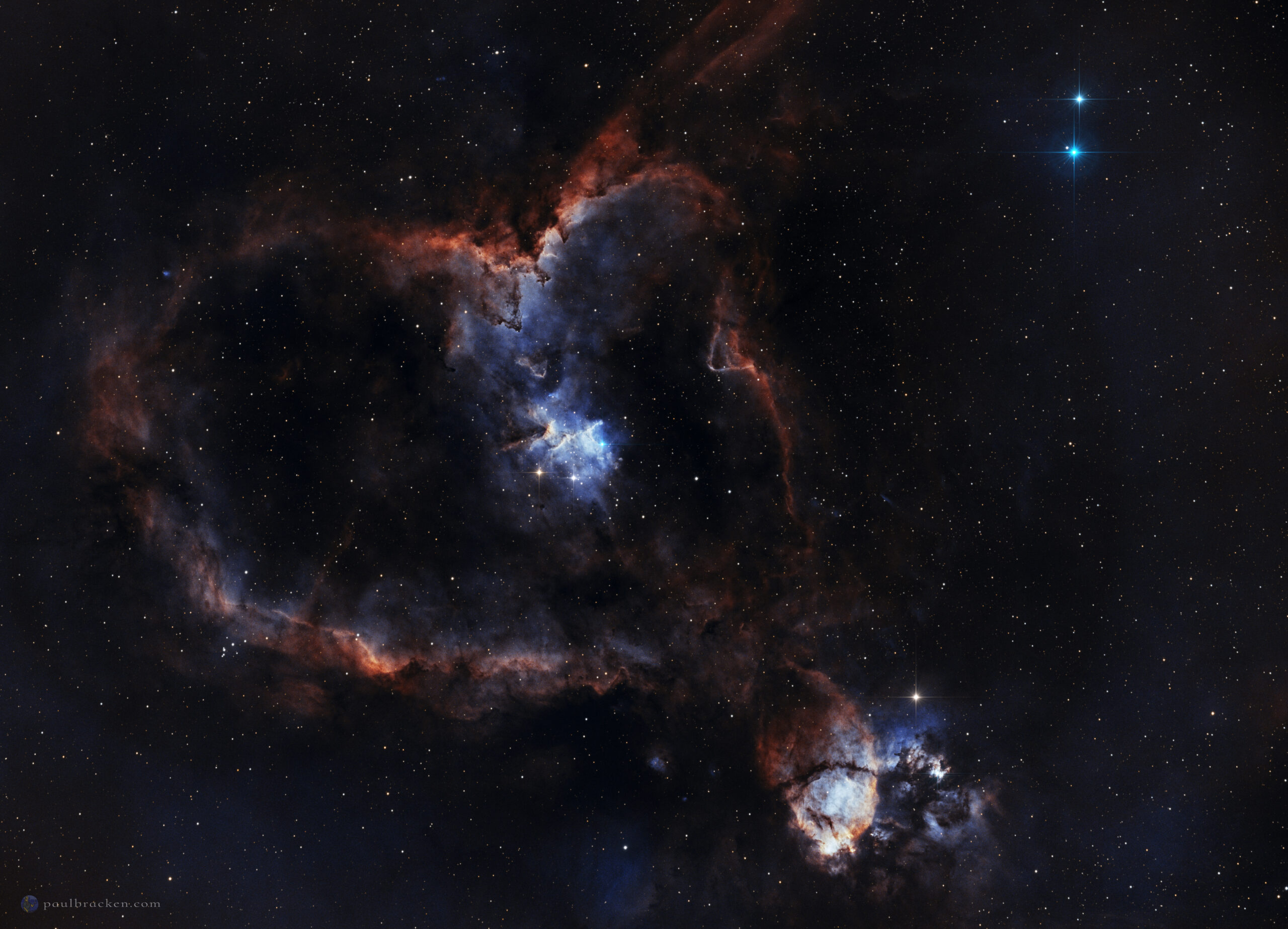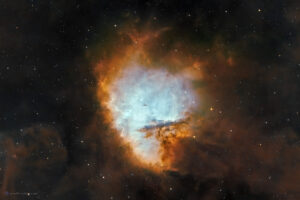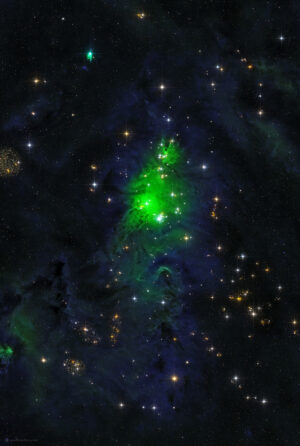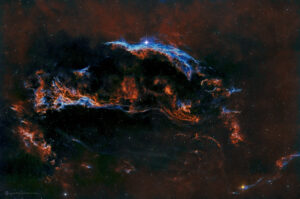Sometimes it’s hard to figure out how a nebula gets its name. But I think it’s fairly obvious why this one is called the Heart Nebula. The strange shape is caused by stellar winds from giant stars in the nebula’s core, and it’s the radiation from these stars that makes the nebulous gases glow. The intense red colors are produced by energized hydrogen, while the blues and oranges indicate the presence of oxygen and sulfur respectively. The nebula is 7,500 light years away, and can be found in the constellation Cassiopeia. It was discovered by William Herschel in 1787.




